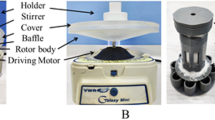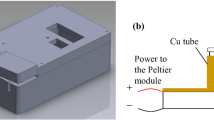Abstract
THE paper disk assay method is frequently used for the detection of penicillin in milk. An overnight test with the cylinder-plate method using Sarcina lutea as the test organism can detect the presence of 0.005 I.U. of penicillin/ml. of milk1. Another method using Bacillus subtilis and a thin layer (6 ml.) of seeded agar can detect 0.05 I.U./ml. within 2½–3 h (ref. 2).
This is a preview of subscription content, access via your institution
Access options
Subscribe to this journal
Receive 51 print issues and online access
$199.00 per year
only $3.90 per issue
Buy this article
- Purchase on Springer Link
- Instant access to full article PDF
Prices may be subject to local taxes which are calculated during checkout
Similar content being viewed by others
References
Anon, Tentative Methods for the Determination of Antibiotics in Milk. Revised August 1958 (Food and Drug Administration, Washington, D.C.).
Standard Methods for the Examination of Dairy Products, seventh ed., 185 (American Public Health Association, Inc., New York, 1960).
Cerny, J., and Morris, R. L. A., J. Milk and Food Tech., 18, 281 (1955).
Kosikowski, F. V., and Mocquot, G. A., Intern. Dairy Congr. Proc., 3, 203 (1956).
Foster, J. W., and Woodruff, H. B., J. Bact., 46, 187 (1943).
Storrs, F. C., and Hiett Brown, W., J. Dairy Res., 20, 337 (1954).
Author information
Authors and Affiliations
Rights and permissions
About this article
Cite this article
MEI, H., CLEGG, L. An Increase in Sensitivity for the Assay of Penicillin in Milk. Nature 196, 691–693 (1962). https://doi.org/10.1038/196691b0
Issue Date:
DOI: https://doi.org/10.1038/196691b0
Comments
By submitting a comment you agree to abide by our Terms and Community Guidelines. If you find something abusive or that does not comply with our terms or guidelines please flag it as inappropriate.



